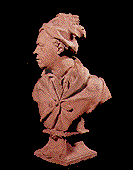
WILLIAM HOGARTH AND HIS WORLD
4 Sessions
William Hogarth was England's first home-bred artistic genius. A painter and print-maker of narrative genre scenes, portraits and social satires, Hogarth helped to transform English art and his society. Friend of novelist Henry Fielding and blind jurist Sir John Fielding, Hogarth, through his art and writings on social reform issues, secured legislation that protected the rights of artists to their designs, analysed and theorized about "the beautiful" and satirized the injustices, foibles and hypocrisies of Georgian England. Hogarth also promoted native English artists, like himself, over imported continental talent. He helped to decorate Vauxhall Gardens, an entertainment night spot, giving artists public exposure before the era of art museums. He also developed the idea of using Captain Thomas Coram's charitable Foundling Hospital as a venue for the promotion of English art. Hogarth's paintings went hand in hand with George Frideric Handel's charitable performances of Messiah. Religious subjects dealing with charity and mercy reinforced the purposes of the institution.
This art history lecture series will look at Hogarth's life and times in early Georgian England--the monarchy, the cultural society in London, the art world in general--Hogarth's competition--and the work of Hogarth in particular, both his paintings and his prints. Among the paintings and modern moral subject print series we will examine are The Beggar's Opera, Marriage A-la-Mode, Four Times of the Day, Industry and Idleness, the Rake's Progress, the Harlot's Progress, Beer Street and Gin Lane, his major portraits and conversation pieces.
OUTLINE OF THE COURSE:
THE WORLD OF WILLIAM HOGARTH
I. EARLY GEORGIAN ENGLAND
SUCCESSION OF THE HOUSE OF HANOVER
THE GROWTH OF GEORGIAN LONDON
SIR ROBERT WALPOLE, “PRIME MINISTER”
JACOBITE REBELLION
II. THE WORLD OF WM HOGARTH
BORN IN SMITHFIELD, LONDON 1697
FATHER RICHARD HOGARTH, LATIN SCHOLAR, SCHOOL TEACHER, WRITER AND COFFEE-HOUSE PROPRIETOR
RICHARD HOGARTH IMPRISONED FOR DEBT
WM HOGARTH APPRENTICED TO SILVERSMITH ELLIS GAMBLE
WM HOGARTH LEAVES APPRENTICESHIP, BECOMES
ENGRAVER
EARLY PORTRAITS AND CONVERSATION PIECES
WM HOGARTH AND THE LONDON THEATRE
III. WM HOGARTH AS A YOUNG MAN
SIR JAMES THORNHILL, HISTORY PAINTER
HOGARTH MARRIES JANE THORNHILL
POVERTY AND CHARITY IN 18th CENTURY LONDON: CAPT THOMAS CORAM AND THE FOUNDLING HOSPITAL
HOGARTH A GOVERNOR OF THE INSTITUTION
HANDEL’S CONTRIBUTION TO THE FOUNDLING HOSPITAL
PORTRAITS
IV. THE MODERN MORAL SUBJECT
HOGARTH AS PRINTMAKER
HOGARTH AND THE FIELDINGS: SOCIAL REFORM IN ART AND LITERATURE
V. HOGARTH IN 1750s and 1760s
LATE PORTRAITURE
CONFLICT OVER AN ART ACADEMY
ANALYSIS OF BEAUTY
MODERN MORAL SUBJECTS
HOGARTH IN POLITICAL ARENA
HOGARTH’S ARTISTIC LEGACY
Maintained by Bonita Billman
Last updated May 28, 1998